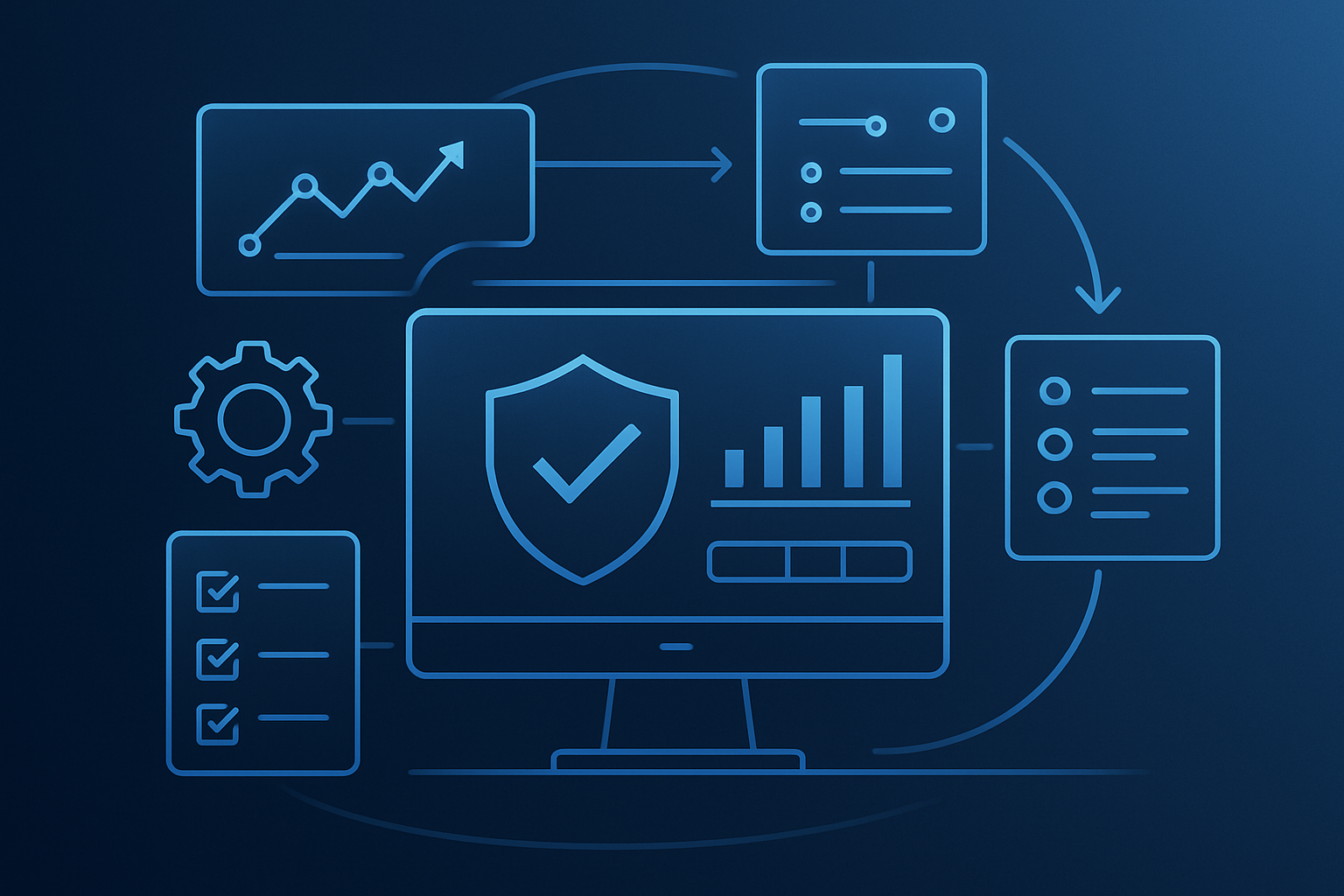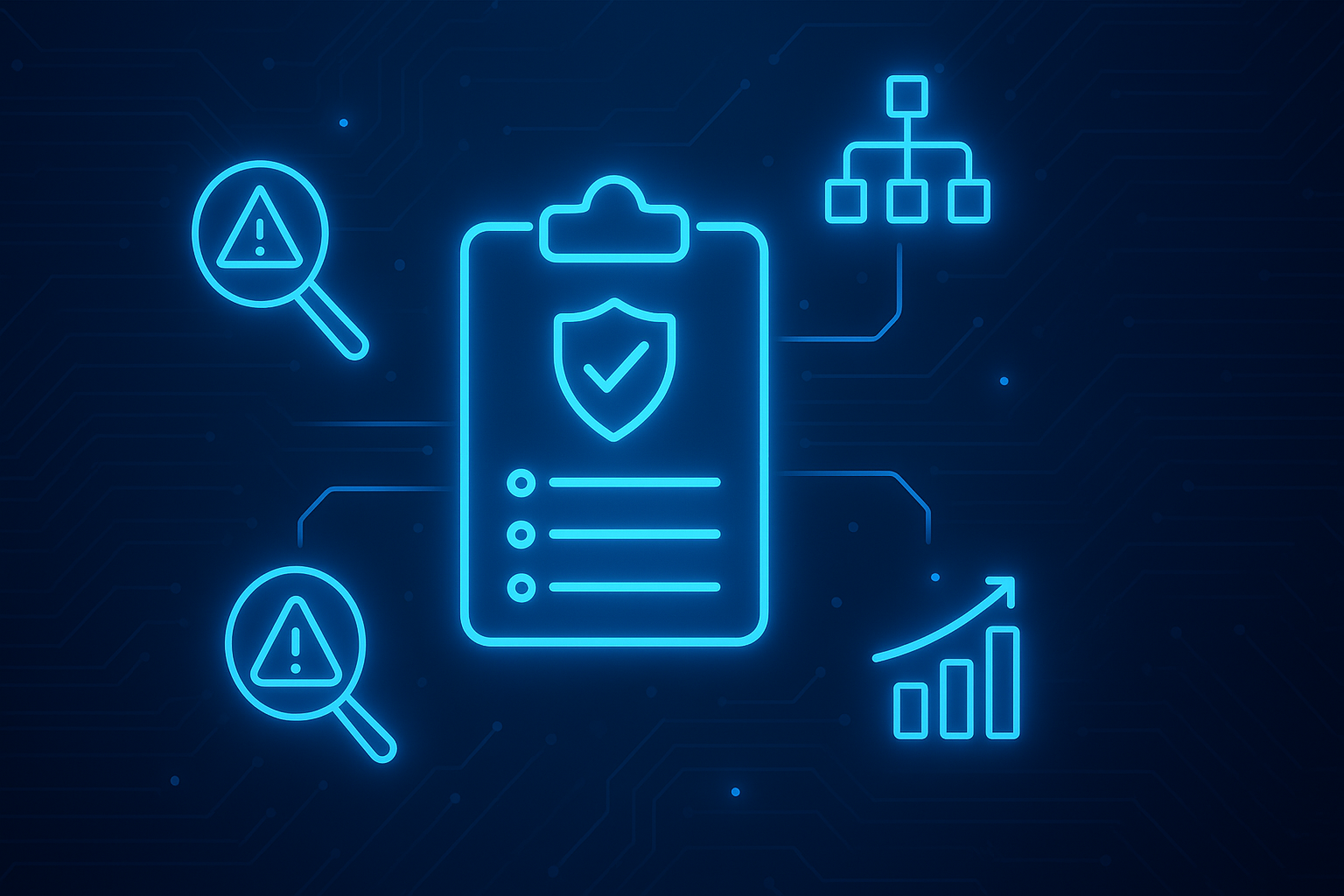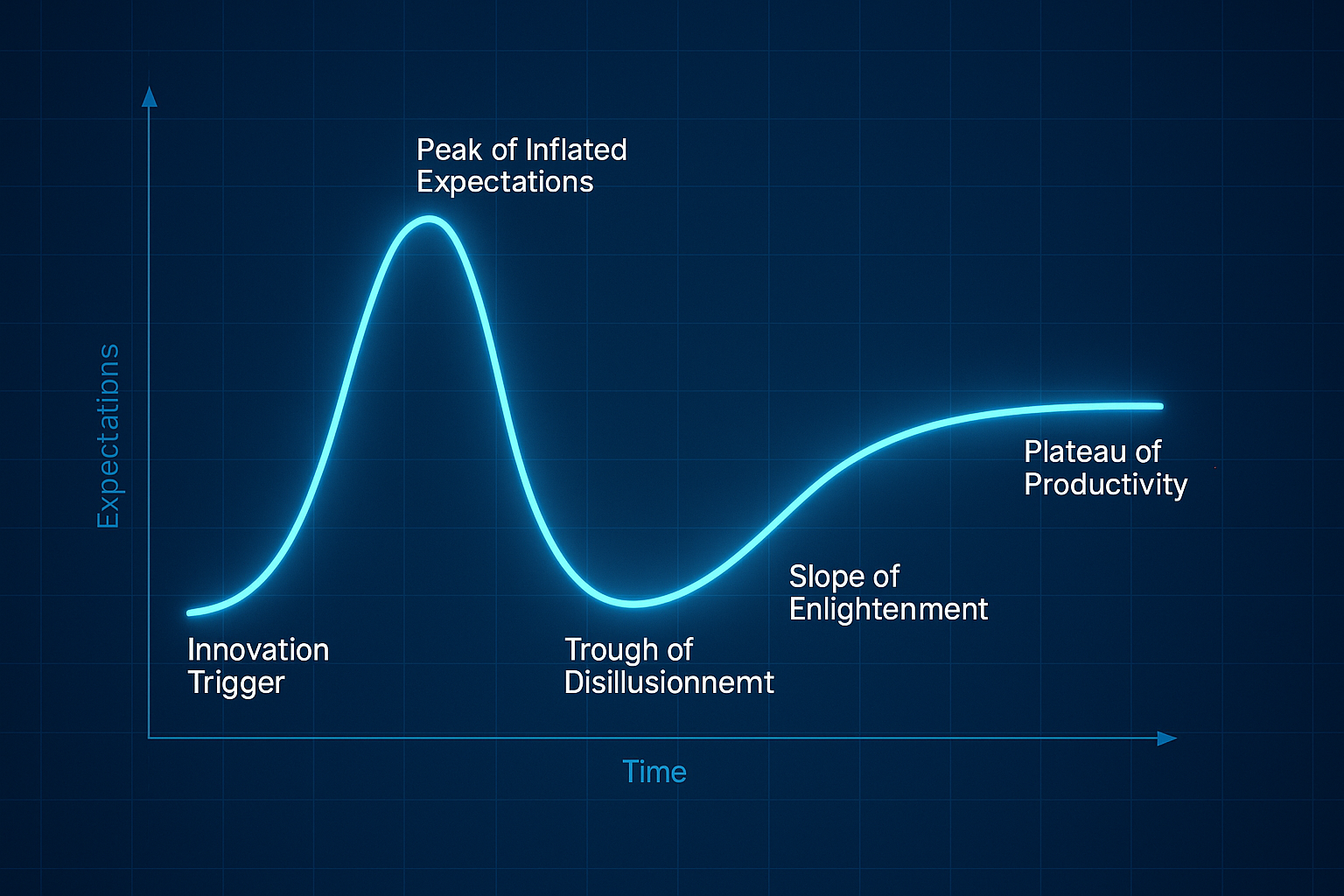The cybersecurity and risk management landscape is evolving at an unprecedented rate. As digital transformation accelerates, regulatory demands multiply, and threats become increasingly sophisticated, organizations can no longer afford to rely on outdated approaches to governance, risk, and compliance (GRC).
The 2025 Gartner® Hype Cycle™ for Cyber Risk Management confirms this shift, discussing Cyber GRC as a critical innovation area and naming CyberSaint as a recognized vendor.
At CyberSaint, we feel that this is more than recognition - it's a clear signal: legacy GRC tools are no longer fit for purpose. The future belongs to Cyber GRC.
This frustration isn't unique; it's systemic. As Gartner® notes in the 2025 Hype Cycle™, “The need for a comprehensive, strategic approach to robust cybersecurity controls and measures has become more crucial than ever as businesses increasingly leverage digital technologies across various functions, expanding the potential cyberattack surface.”
The Hidden Cost of Legacy GRC Tools
Traditional GRC tools weren't designed for today's digital enterprise. Initially built to manage financial or operational risk, these platforms have been retrofitted to address cybersecurity challenges. The result? A fragmented ecosystem that doesn't just slow teams down, it actively increases organizational risk.
Ask yourself: How many hours does your security team spend each week on manual compliance tasks that could be automated?
Where Legacy Tools Fall Short
Legacy cyber GRC systems create predictable pain points:
- Manual bottlenecks that drain your already stretched security personnel
- Rigid frameworks that force teams into static, checkbox-driven compliance
- Disconnected data that makes real-time risk insights nearly impossible
- Scaling limitations that break down across business units and evolving threats
- Generic reporting that fails to connect cyber risk to business impact
But the real damage happens downstream. Security leaders find themselves defending programs built on compliance checklists rather than prioritized risk. Executives lose confidence when they can't get timely, actionable risk data. Talented cybersecurity professionals often burn out managing tedious, manual processes instead of protecting the business.
As one security director recently told us: "We spend more time feeding our GRC tool than actually managing risk."
This frustration isn't unique; it's systemic. As Gartner notes in the 2025 Hype Cycle, “The need for a comprehensive, strategic approach to robust cybersecurity controls and measures has become more crucial than ever as businesses increasingly leverage digital technologies across various functions, expanding the potential cyberattack surface. “
Enter Cyber GRC: Built for Speed, Scale, and Strategy
This gap is exactly where Cyber GRC emerges as a game-changer.
Cyber GRC is a highly impactful technology that fundamentally shifts away from legacy risk and compliance processes. Gartner describes it as, “Cyber GRC tools provide capabilities to efficiently manage business objectives and improve overall risk management effectiveness. They can provide visibility of relevant cyber risks and support informed decision making. Cyber GRC tools provide mitigating controls for reporting and analytics that improve overall security posture.”
Cyber GRC represents a new generation of platforms explicitly built for enterprise cyber risk. These solutions move beyond static compliance management to create a living, intelligent system that unifies risk, compliance, and control monitoring.
What Makes CyberSaint Cyber GRC Different?
Risk-first thinking: Instead of checking boxes, these platforms prioritize threats based on actual likelihood and business impact.
Embedded intelligence: AI-powered automation handles control mapping, continuous monitoring, and dynamic assessments, freeing your team for strategic work.
Real-time connectivity: Direct integration with security tools provides up-to-date risk insights rather than quarterly snapshots.
Business language: Cyber risk gets translated into financial terms and KPIs that resonate with executive stakeholders.
This modern approach transforms how organizations respond to cyber risk. Teams can react in real time to emerging threats, scale seamlessly across business units, and adapt continuously as new regulations and technologies emerge.
Beyond Technology: Strategic Transformation
The shift to Cyber GRC isn't just a technical upgrade; it unlocks strategic capabilities across the organization.
For CISOs and Security Leaders: Imagine having a single view into cyber risk, mapped to controls, vulnerabilities, and financial exposure. This visibility enables proactive decisions, informed budgeting, and improved alignment with executive priorities.
For Compliance and Risk Teams: Automated control monitoring and cross-framework assessments reduce audit fatigue, freeing time for higher-value risk analysis.
For Executives and Boards: Finally understand cyber risk in business terms and track security investment returns with clarity and confidence.
Over time, Cyber GRC becomes a foundation for organizational maturity. Instead of reactive compliance, teams evolve toward predictive, risk-informed decision-making. Built-in benchmarking, trend analysis, and AI-driven modeling help leaders forecast risk exposure and prioritize controls with precision.
How CyberSaint Delivers: Cyber GRC Compared to Legacy GRC
We feel that CyberSaint's recognition across four high-impact and transformational categories in the Gartner® 2025 Hype Cycle™, Cyber GRC, AI in Cyber-Risk Management, Continuous Controls Monitoring, and Third-Party Cyber-Risk Management, positions it as an innovator in this transformation.
The CyberStrong platform directly addresses the limitations that plague legacy systems:
Intelligence That Works for You
AI-powered automation handles control mapping using natural language processing and continuously monitors controls through real-time telemetry integration.
CyberStrong reduces the compliance burden by automating control scoring and mappings between industry frameworks and custom control sets. Enterprises can easily scale the number of assessments they can complete for expansive controls frameworks like NIST 800-53, ISO 27001, and more that legacy GRC tools cannot.
Risk That Makes Business Sense
A dynamic risk register connects risk scenarios to control health, vulnerability data, and loss expectations for quantitative tracking that speaks the language of business.
Access a centralized space for all the risk insights you need to make informed decisions, with real-time updates.
Flexibility Without Complexity
Model-agnostic cyber risk quantification supports the FAIR model, NIST 800-30-based risk assessments, and other leading methodologies for modeling risk in financial terms and justifying security investments.
Insights That Drive Action
Unified executive dashboards deliver real-time insights from control health to residual risk - always current, always board-ready.
Context That Matters
Benchmarking tools compare your risk posture against industry peers while ROI modeling helps optimize the impact of security spending.
By converging risk management, compliance automation, and business impact analysis, CyberSaint helps organizations finally leave legacy GRC limitations behind.
The Choice Is Clear
Cyber GRC represents the foundation of modern cyber risk management. We feel that Gartner® recognition confirms what forward-thinking security leaders already know: the market is shifting, and organizations relying on legacy GRC tools risk being left behind.
The question isn't whether to modernize, it's how quickly you can make the transition.
If your current GRC system can't automate routine tasks, quantify risk in business terms, or scale with your organization's growth, it's actively holding back your security program.
Ready to move beyond the limitations of legacy tools? Discover how CyberSaint's CyberStrong platform transforms cyber risk management from a compliance burden into a strategic business advantage.
Gartner Hype Cycle for Cyber-Risk Management, 2025. By: Deepti Gopal, Pedro Pablo Perea de Duenas
Hype Cycle is a registered trademark of Gartner, Inc. and/or its affiliates and is used herein with permission. All rights reserved.
This graphic was published by Gartner, Inc. as part of a larger research document and should be evaluated in the context of the entire document.
The Gartner document is available upon request from CyberSaint Security.
Gartner does not endorse any vendor, product or service depicted in its research publications, and does not advise technology users to select only those vendors with the highest ratings or other designation. Gartner research publications consist of the opinions of Gartner’s research organization and should not be construed as statements of fact. Gartner disclaims all warranties, expressed or implied, with respect to this research, including any warranties of merchantability or fitness for a particular purpose.





.png)
.png)
.png)
%201.png)
.png)




